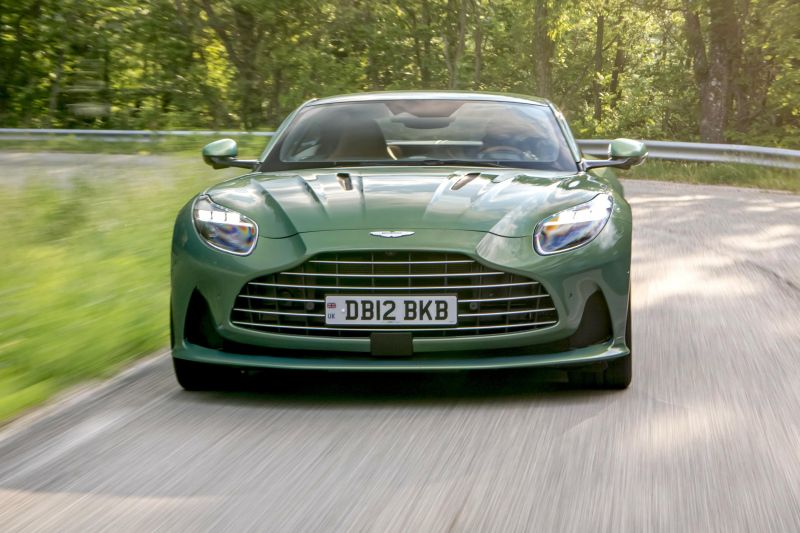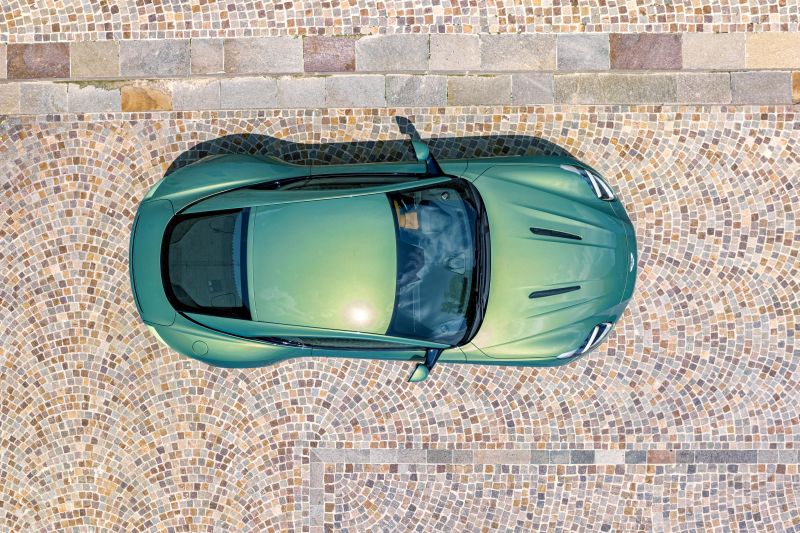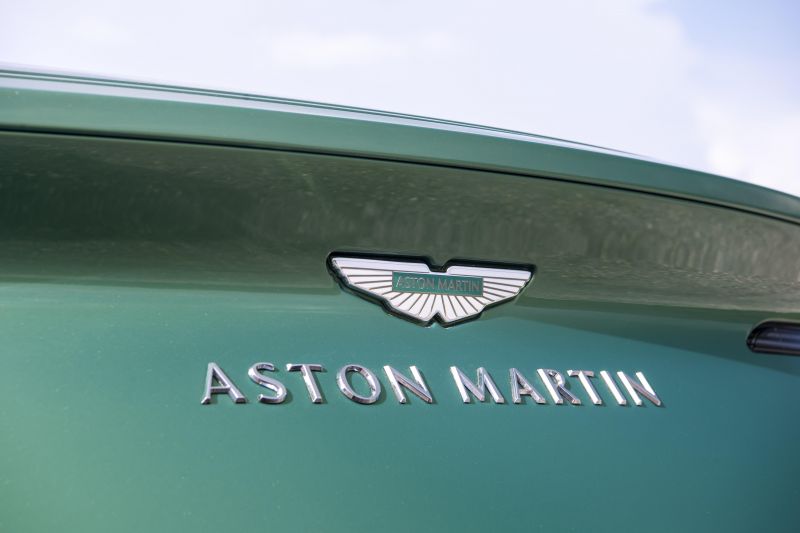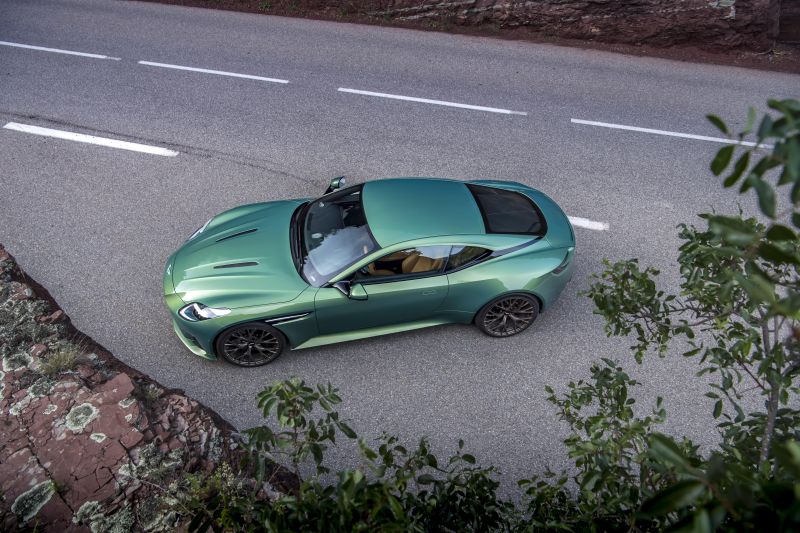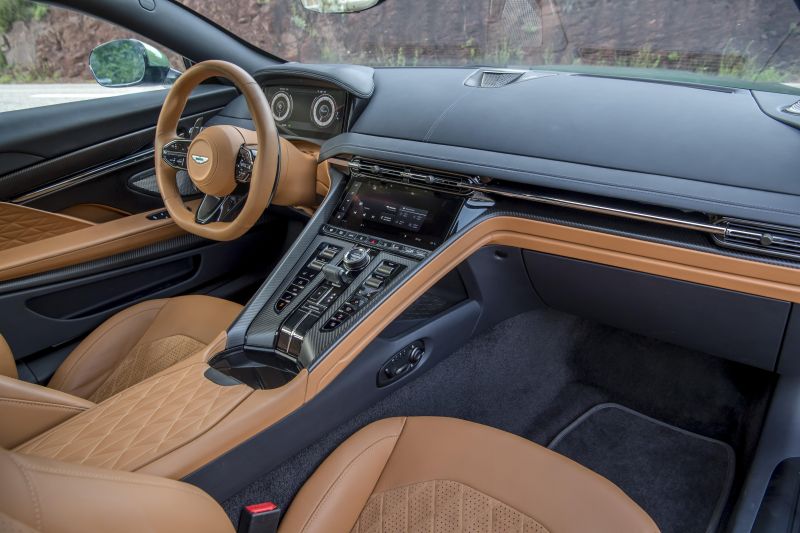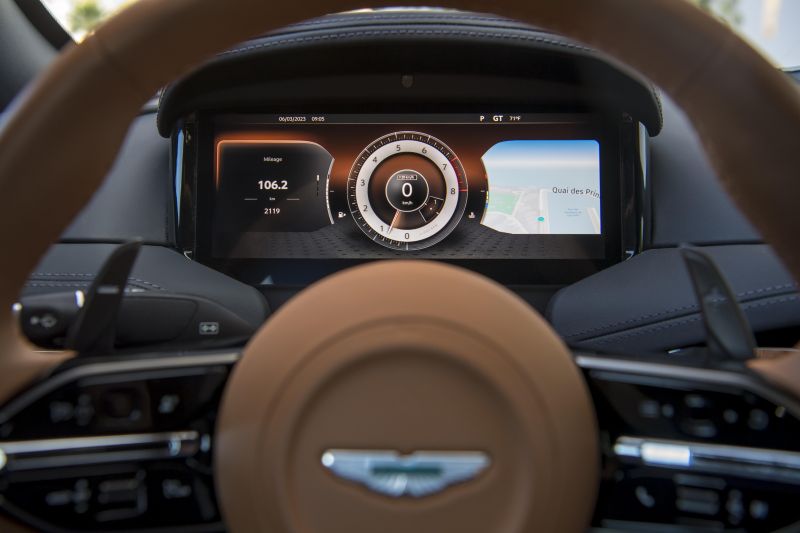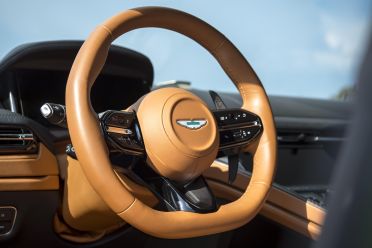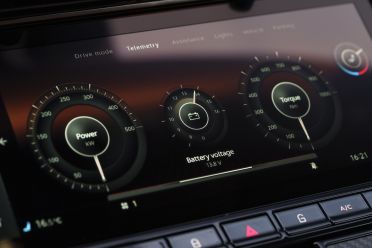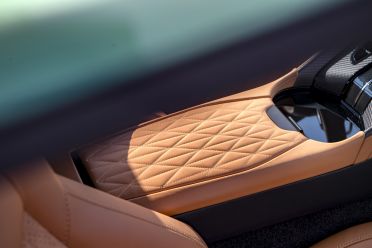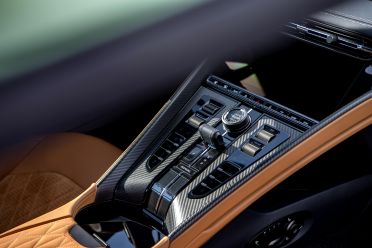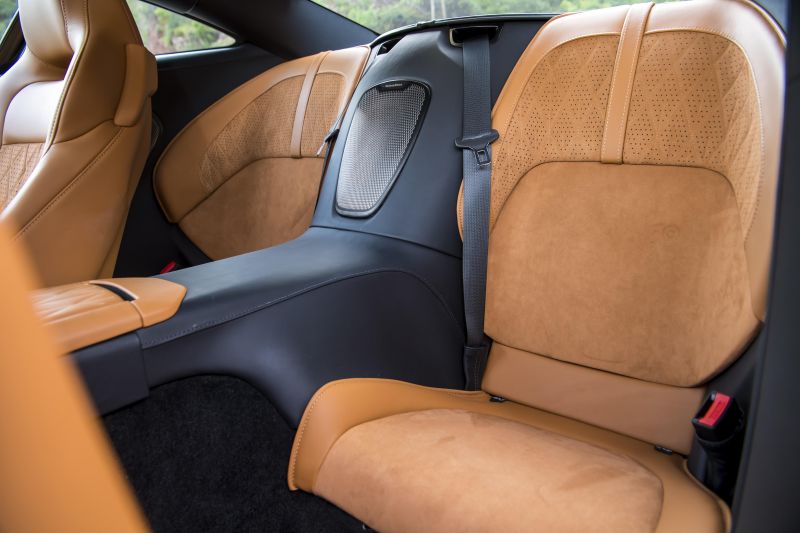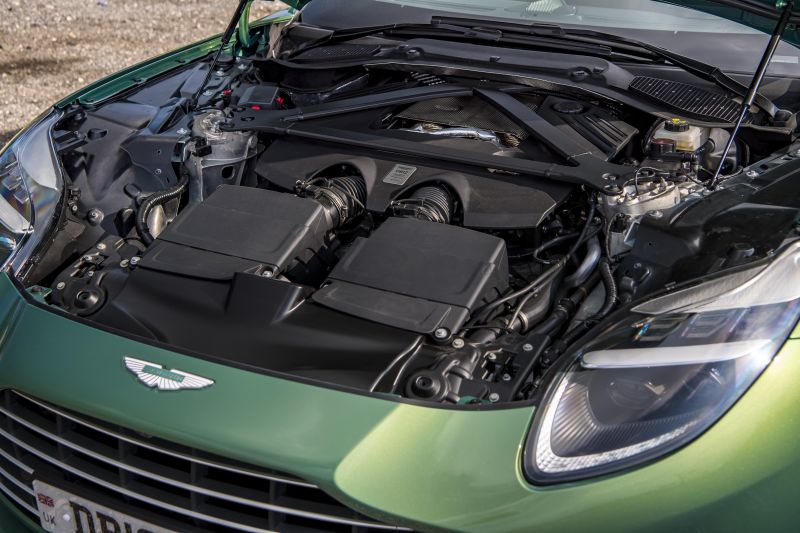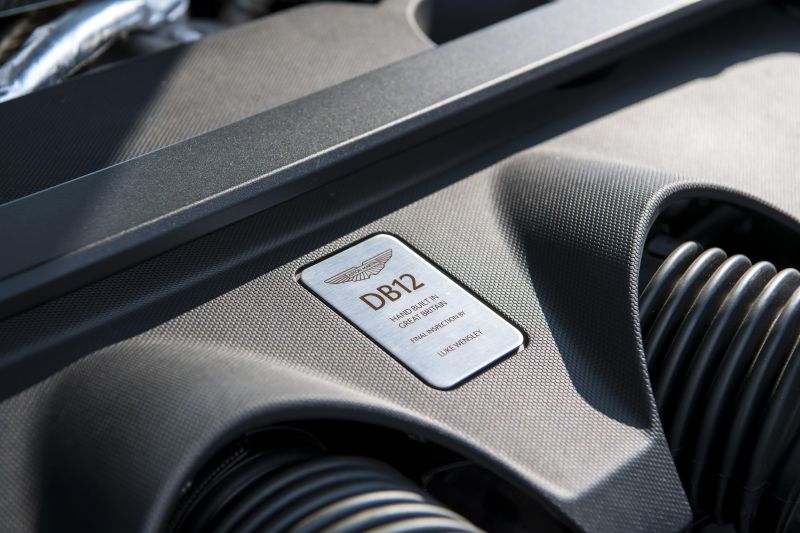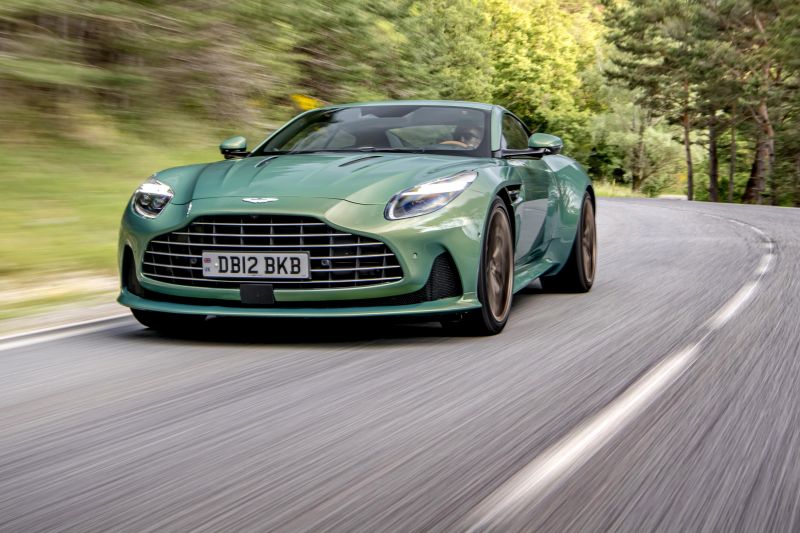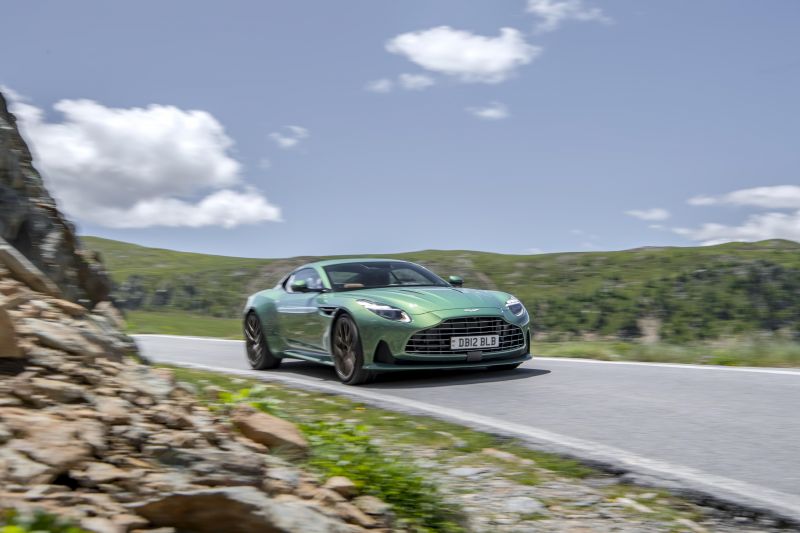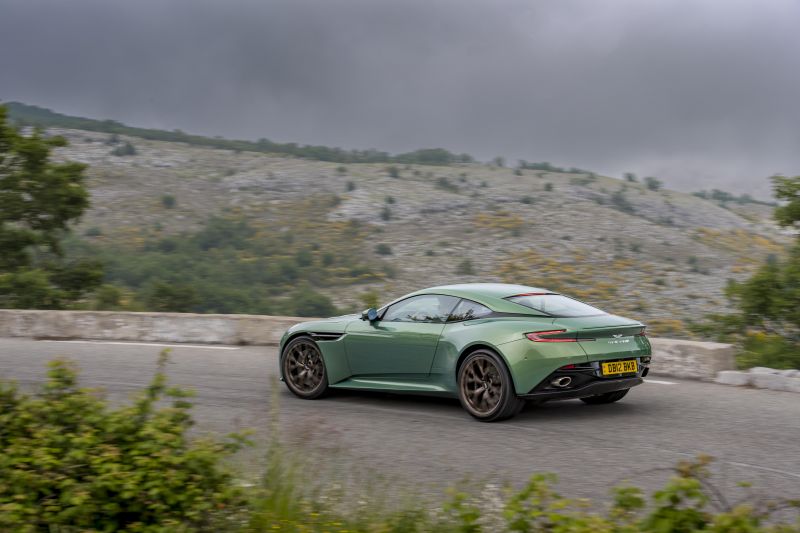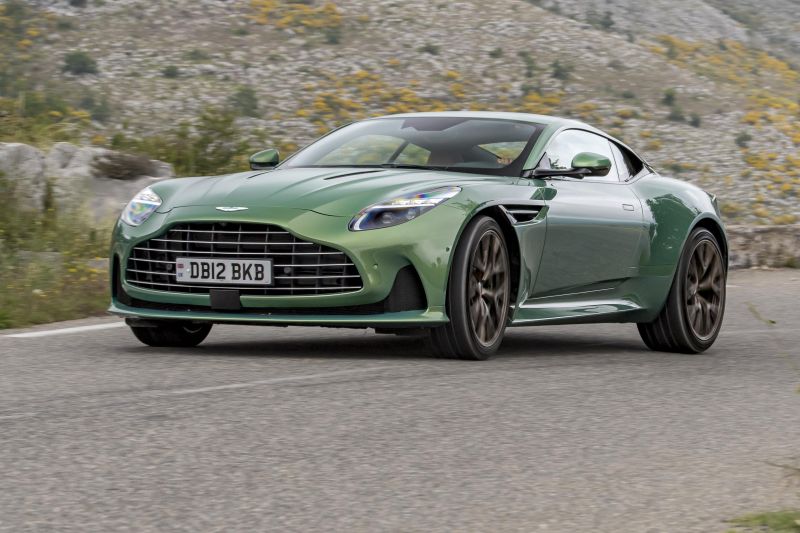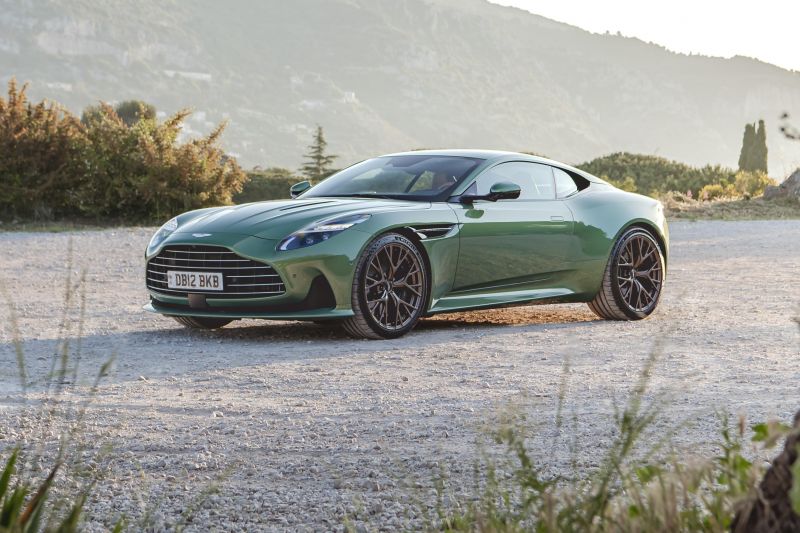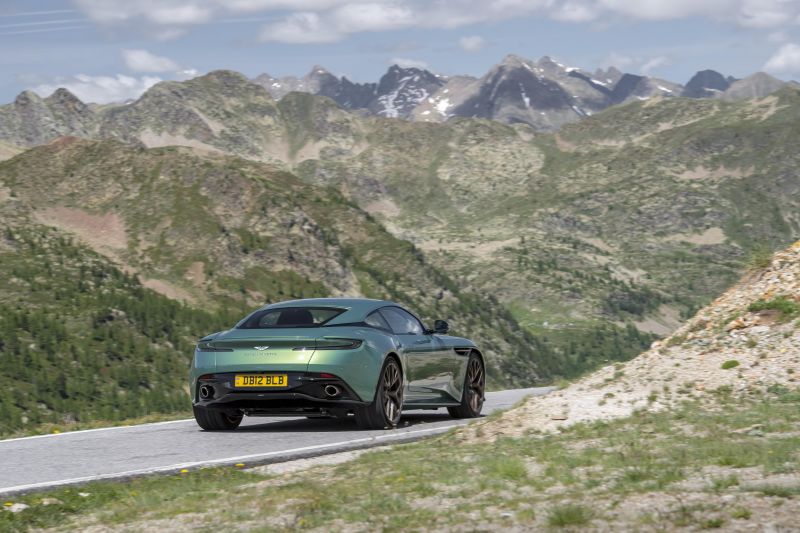The pace is absolutely furious and the cornering loads are high as we snake our way around deserted hills and green farmland towards the lunch stop at La Bastide, and already the all-new Aston Martin DB12 feels like a car that’s just rolled out of the gates in Maranello rather than Gaydon.
This is a new, more accomplished Aston Martin. To be honest, I wasn’t expected this kind of progress so rapidly. I’m utterly gobsmacked and I’ve only been behind the wheel for an hour or so.
Over the last few years there’s been a huge step change over at Aston Martin under the direction of billionaire businessman and investor Lawrence Stroll, who seems hell-bent on creating the world’s most desirable ultra-luxury performance brand.
It feels like Aston Martin 2.0, led by a reboot of the entire operation including brand aspirations and pinpoint market positioning. This is a marque that no longer wants to just compete in this rarefied space, it wants to own it.
The all-new DB12 is being billed as the first next-generation Aston Martin sports car despite looking much like the DB11 it replaces.
At first glance you could be forgiven for thinking otherwise, but make no mistake, the DB12 is a more focused high-speed sensation and perhaps the best series production model Aston Martin has made in its 114 years of operation.
This is precisely the car the next iteration of James Bond will require if he’s to outpace the villains high above Monaco on the intoxicating stretch of road known as the Route Napoleon, complete with endless fast-flowing curves and flat-out, point-to-point straights, emboldening full-throttle assaults with no holding back.
The DB12 isn’t an entirely new generation, though its development has been going on for years with a level of detail bordering on obsessive, if you count the wide-ranging engineering and design enhancements running through the vehicle.
In what is a rare feat in today’s automotive landscape, the DB12 is shorter and narrower than DB11 it replaces – the latter because the side mirrors are now exquisitely crafted frameless types, and shave millimetres off the car’s width.
It gains wider tracks at both ends; 22mm down back and 6mm up front. That spells less weight transfer and higher grip – two areas which seem properly transformed on the DB12, and were instantly perceptible at the very first set of S-bends we went on to obliterate on Route Napoleon.
You’ll immediately pick its bolder grille – ostensibly designed to facilitate greater cooling capacity, while at the same time evoking a meaner streak that draws inspiration from the DBS. Mind, it’s still an incredibly handsome design.
Aston aficionados will also likely pick up on a little bit of Vanquish up front. It’s too subtle to be retro, which is why I rate the design on DB12 as something quite outstanding given the balance achieved between form and function.
In what is a first for an original equipment manufacturer, DB12 gets new Micheline Pilot Sport 5S tyres. It’s not just the extra grip they provide, they’ve got a polyurethane layer that claims to reduce tyre roar by 20 per cent.
Aerodynamics also factor large with DB12, but not at the expense of aesthetics. The side strakes are more pronounced and bleed air off the front tyres, directing it down the side of the body rather than hitting the A-pillar where it would cause undue wind noise.
The ducts incorporated into the C-pillars suck air in while creating a one-metre-high air blade at the rear of the car at 160km/h, negating the need for an ungainly rear spoiler.
Aston’s bonded aluminium architecture gets a seven per cent bump in torsional rigidity and lateral stiffness as a result of more substantial underbody bracing. The overall effect is sharper steering and more confident turn-in under load.
There’s also been a massive upgrade in suspension performance thanks to new Intelligent Active Dampers. Compared with DB11, the tuning range available to the engineers on DB12 using the latest Bilstein DTX dampers is up a staggering 500 per cent.
Springs and anti-roll bars have been revised, with a unique spring rate and thicker sway bars – if only by 1mm up front and 2mm at the rear, while all the bush rates have also been changed. In another first for Aston Martin, DB12 also gets an e-diff that can go from fully open to 100 per cent locked in mere milliseconds.
Power is up big time, yet there’s no such electrification or hybridisation required on the 4.0-litre twin-turbo V8, because clearly any previous output restrictions have been well and truly removed for DB12.
Aston’s powertrain gurus have unleashed no less than 500kW of power and 800Nm of torque using a combination of larger turbos, modified cam profiles, optimised compression ratios, and significantly beefed-up cooling to handle the extra grunt.
Inside, the DB12 is simply years ahead of anything Aston has ever done previously. For years it sourced crappy, out-of-date infotainment systems from the likes of Volvo and Mercedes-Benz.
In what is a remarkable turnaround, Aston Martin has spent the last three years building bespoke UI and UX systems for what is an entirely in-house-developed infotainment system. All of this makes the DB12 the first ‘fully-connected’ Aston Martin with features such as over-the-air (OTA) updates, an app, and Aston Martin’s own secure data servers.
How much does the Aston Martin DB12 cost?
While Aston Martin is expected to confirm pricing for DB12 in Australia and New Zealand in July, indicative pricing places the vehicle at around $450,000 before on-road costs.
The company is currently reviewing details relating to the Free Trade Agreement between the UK and Australia, which may have an impact on pricing.
Nevertheless, DB11 kicked off from $382,495 before on-roads for the V8 Coupe, while the V8 Volante was priced at $406,495 before on-roads. The AMR V12 version wore a $437,400 before on-roads sticker.
What is the Aston Martin DB12 like on the inside?
Aston Martin has been behind the eight ball when it comes to in-car technology for as long as I can remember, but with a noticeable level of craftsmanship on display given the hand-built nature of this storied brand.
However, no longer will Aston play second fiddle to rivals when it comes to technology. The DB12 heralds a new era for the marque, and one that may position it as the benchmark in the high-performance segment.
The DB12 is the first step for Aston Martin owning its own technology. It’s a huge investment that will see the brand future-proof its next-generation cars using an interface with its own graphics and components, without losing the tactility of switches and dials completely.
It’s not just the infotainment transformation that wows you, it’s a whole gamut of things from design and materials, to the hand-stitched craftsmanship, all of which are wonderful; lavish and functional at the same time.
The entire DB12 colour palette is desirable, encompassing shades of green, silver, grey, white, blue, and even tasteful purples, but it’s our Iridescent Emerald outside with combination Oxford Tan/Onyx Black hide that seems to be the favourite among onlookers whenever food or the local geography warranted a pit stop.
Our Sports Plus seats upholstered with quilted Alcantara inserts are aesthetically exquisite and luxurious in equal measure, while providing sufficient upper-body bolstering in the most demanding conditions.
Not surprisingly, the cabin is explicitly driver-centric with the pews mounted deep into the chassis of DB12 – perhaps more than I recall of any previous Aston, including my short but sweet stint in the rare and raucous Vantage GT12.
The almost-round, hand-stitched leather steering wheel is thicker than I might have hoped for, but in the hands it’s wonderfully tactile with a level of craftsmanship matching the very best.
Even the paddles looked to have been designed with ergonomics and minimalism in mind.
The switchgear is on another level entirely, with what feels like perfectly weighted and knurled scroller barrels for volume and temperature control, while the start/stop button (also knurled) doubles as the drive-mode selector.
It’s all intuitive and simplified with just a few key shortcut buttons, including a dedicated manual mode and a short leather-bound shifter.
Both screens are beautifully integrated in the dash and represent a nice departure from the all-too-common floating versions these days – even in the luxury space. We drove pre-production cars, and expect the systems will be further refined to iron out any remaining bugs that might still exist, but mostly it worked during our launch program.
There’s a heightened sense of space inside with more than sufficient space for phones, wallets, and keys thanks to a decent centre console bin and a slightly less convenient storage area under the console bridge, purely from an access point. We could only find one cupholder up front.
While Aston Martin might have laid claim to the world’s first ‘Super Tourer’ in the DB12, but it has two occasional seats in the rear with swathes of the same deluxe Bridge of Weir hide as those up front.
For weekends and overnight stays there’s a decent boot capable of swallowing at least a few good-size soft bags – 262 litres worth, to be precise.
What’s under the bonnet?
While Aston Martin hasn’t ruled out an uprated version of DB11’s twin-turbo V12 for a more powerful variant of the DB12 at some stage during its lifecycle, for now at least it gets a heavily revised version of the hand-built Mercedes-AMG sourced 4.0-litre twin-turbo V8.
It sends 500kW of power at 6000rpm, and 800Nm of torque between 2750rpm and 6000rpm to the rear wheels.
It can go from a standing start to 100km/h in 3.6 seconds, with a top speed of 325km/h.
That’s an uplift of 53kW and 100Nm on the DB11 AMR V12, and 22kW on the DBS, giving the DB12 the highest power output in the segment. And it’s not just at the peak, either, it’s across the entire engine range.
It’s been achieved using larger turbos, modified cam profiles, optimised compression ratios, and increased cooling capacity.
For the first time on an Aston Martin DB model the V8 is mated to an eight-speed auto transmission with higher torque capacity, shorter final drive and unique shift calibration, though the gear ratios are the same as DB11.
In a first for an Aston Martin road car DB12 gets e-differential, which gives engineers a broader range of tuning capability including a seamless transition between open and closed. It can go from fully open to fully locked in just 135 milliseconds.
How does the Aston Martin DB12 drive?
As always, enthusiasm got the better of me right from the get-go, by hopping into the driver’s seat first-up while my driving partner was preoccupied.
The slower, narrower roads above Monaco and towards Nice would allow for familiarisation with steering, suspension, and feedback on roads where every millimetre counts. At least that was my rationale.
Seat comfort is extraordinary and yet, even as we snake our way out of here down to Cannes before heading up to Mougins for a coffee stop, I’m already in awe of each and every facet of this car.
Outside, the DB12 appears substantial and muscular, but from behind the wheel it’s easy enough to thread through tight squeezes on roads with minimal margin for error.
Apart from the sumptuous nature of the Alcantara quilting and the perfectly measured bolster, the precise steering and responsive chassis captivate me most on this low-speed stint. I don’t think we’ve hit 100km/h, and somehow it’s still utterly inspiring.
The steering feels wonderfully direct and comfortably weighted at the same time. There are rivals offering more power assistance that feel nervous, where the Aston gets the balance right.
I was less confident the ZF eight-speed would provide the same visceral characteristics of a well-oiled transmission like Porsche’s mesmerising PDK or Ferrari’s ultra-quick-shifting dual-clutch boxes.
But it’s sharp, quick, and above all, smooth as silk. That’s just in the default GT mode that offers up the most comfortable ride. It really is comfortable, even over broken road with crumbling edges.
Then there’s the noise. One usually trustworthy colleague gave me a heads-up the DB12 was too quiet. Not true, not even remotely, unless of course, he was wearing noise cancelling earbuds.
There’s an override loud button for GT mode but it’s automatically activated (that’s genuine exhaust noise) when you scroll around to Sport or above, and it’s quite perfectly orchestrated. The exhaust note in Sport is simply intoxicating. It’s teetering on the edge of offensiveness to the point you wouldn’t want it any louder.
There’s an uphill climb ahead and a fast-moving local in a BMW 2 Series is straight-lining most of the bends, so we take it up a notch into Sport+ for quicker responses. Suffice it to say, the DB12 dispatches the BMW with disdain.
There’s so much torque on tap it feels so much quicker under full throttle than the performance specs might suggest. This a very quick car that almost begs to driven as hard as you can manage, but never does it feel in unruly or at the limit.
In-gear acceleration is huge and remarkably, there’s no sign of lag from the upgraded twin-turbo V8 regardless of where you are in the rev range. That in itself is an engineering feat and wonderfully rewarding for the driver.
There’s massive mechanical clarity and feedback afforded the driver under serious loads, yet the DB12 always feels settled. It’s uncanny for a car of these proportions and testament to some underbody sorcery by the folks at Gaydon.
My immediate thoughts were I’m not pushing hard enough. It’s too easy. But it’s not that, it’s just the chassis is so dialled with every other aspect of the car even when you’re on the limit.
It just seems to remain solid and brilliantly ride compliant at the same time, even in Sport+, and is every bit as involving as something more unhinged.
A special shout out to the adaptive dampers not only for their superb contribution to DB12’s handling competency but for the equal measure of ride compliance over less-than-perfect B-roads under a variety of different conditions.
It’s only in wet and slippery conditions 800Nm sometimes overwhelms Micheline’s most advanced road tyre, but you’ll know as it happens thanks to the clear feedback. Even then, we were blasting along in Sport and enjoying perfect rear-wheel drive chassis synchronicity.
Tipping the scales at dry weight of 1685kg the DB12 isn’t a lightweight, but not once do you feel its front-to-rear 48:52 weight distribution isn’t spot on. It rotates perfectly in the tricky wet hairpins and is capable of annihilating the most demanding mountain roads with such deftness.
Big steel brakes are standard but the optional carbon ceramic stoppers were fitted to our tester for huge stopping power, applied in a more linear fashion than you might be used to.
The DB12 isn’t just outstanding, it’s the new GT benchmark – at least until the next DBS comes along. It’s a GT car on steroids with no nasty side effects.
What do you get?
Each Aston Martin DB12 will effectively be made to order, and therefore bespoke when it comes to trim and optional kit.
Standard specification on the Aston Martin DB12 includes:
- 21-inch five-spoke forged alloy wheels in Satin Silver
- Frameless wing mirrors
- Dual 10.25-inch displays
- Wireless Apple CarPlay and Android Auto
- Navigation with online connectivity
- Aston Martin App with three years of free connection to online services
- Over-The-Air (OTA) updates and diagnostics
- 11-speaker 390w Aston Martin sound system
- 400mm drilled and grooved cast-iron steel brakes front, 360mm rear
- Michelin Pilot Sport S 5 tyres
- Adaptive dampers
- Solid paint
- Seat heating
Is the Aston Martin DB12 safe?
Like most of its rivals, Aston Martin doesn’t crash test its cars with ANCAP or Euro NCAP and therefore doesn’t get an official safety rating.
However, the list of standard active safety features is extensive and includes:
- Forward collision warning
- Autonomous emergency braking
- Adaptive cruise control with stop and go function
- Lane departure warning
- Lane keep assist
- Traffic sign recognition
- Blind-pot monitor
- Door open rear assist
- Cross-traffic assist
- Driver drowsiness detection
- 360-degree surround-view camera
How much does the Aston Martin DB12 cost to run?
The DB12 is covered by a three-year warranty, with service costs available from individual dealers.
The DB12 has a 78-litre fuel tank and requires premium 98 RON fuel.
CarExpert’s Take
Forget about the Bentley Continental GT S, Ferrari Roma, or any other such rival, the Aston Martin DB12 is on another level.
This car is more a match for the 812 Superfast, but even then the Aston Martin feels like a more complete, more driver-friendly, more refined machine but no less capable when put to the test.
Never mind the visual similarities with DB11, because quite frankly you won’t drive an Aston Martin road car more capable or more completely satisfying than the DB12.
I wouldn’t be surprised to learn the best of Aston Martin’s F1 chassis and powertrain engineers worked on this car, alongside the very best from the technology and the luxury world.
What’s most exciting though is the DB12 is only the first step in a veritable rebirth of the brand. I can only imagine what the next stage of that transformation will deliver.
Click an image for the full gallery

